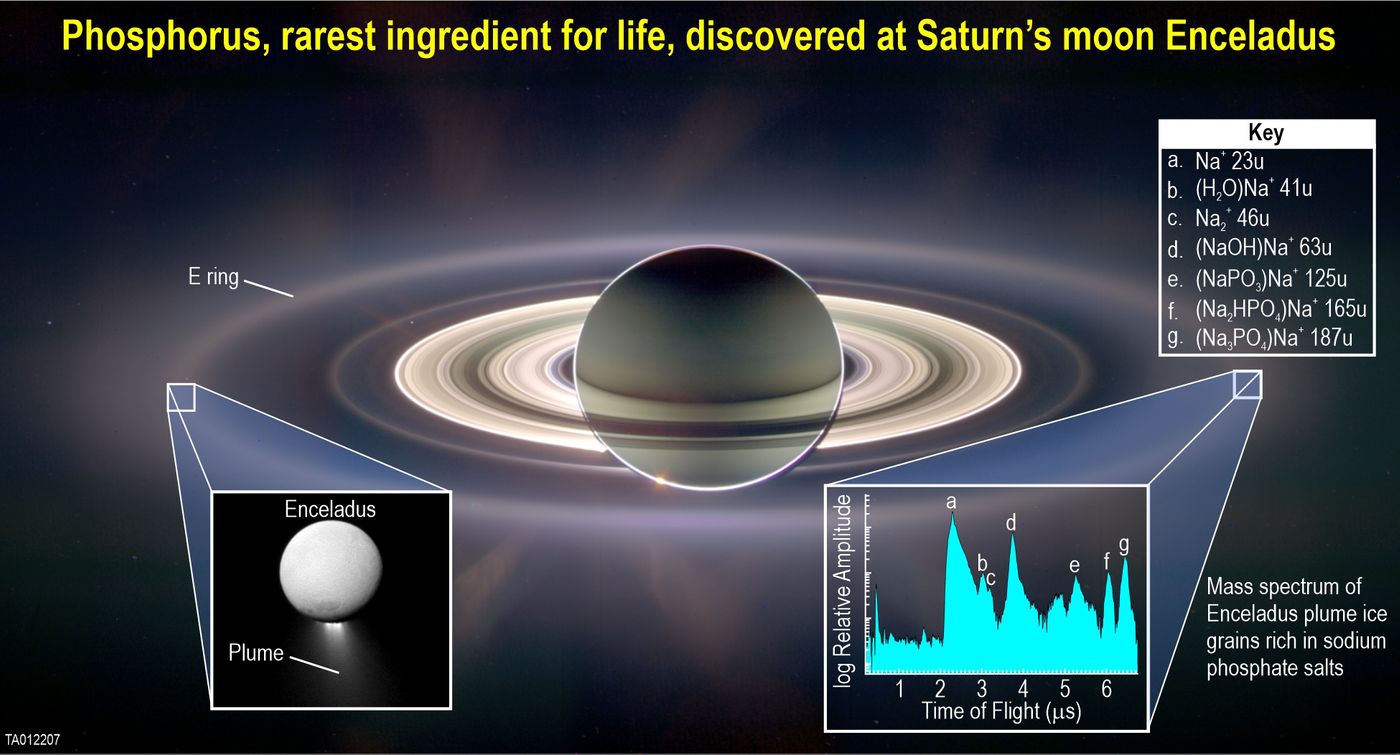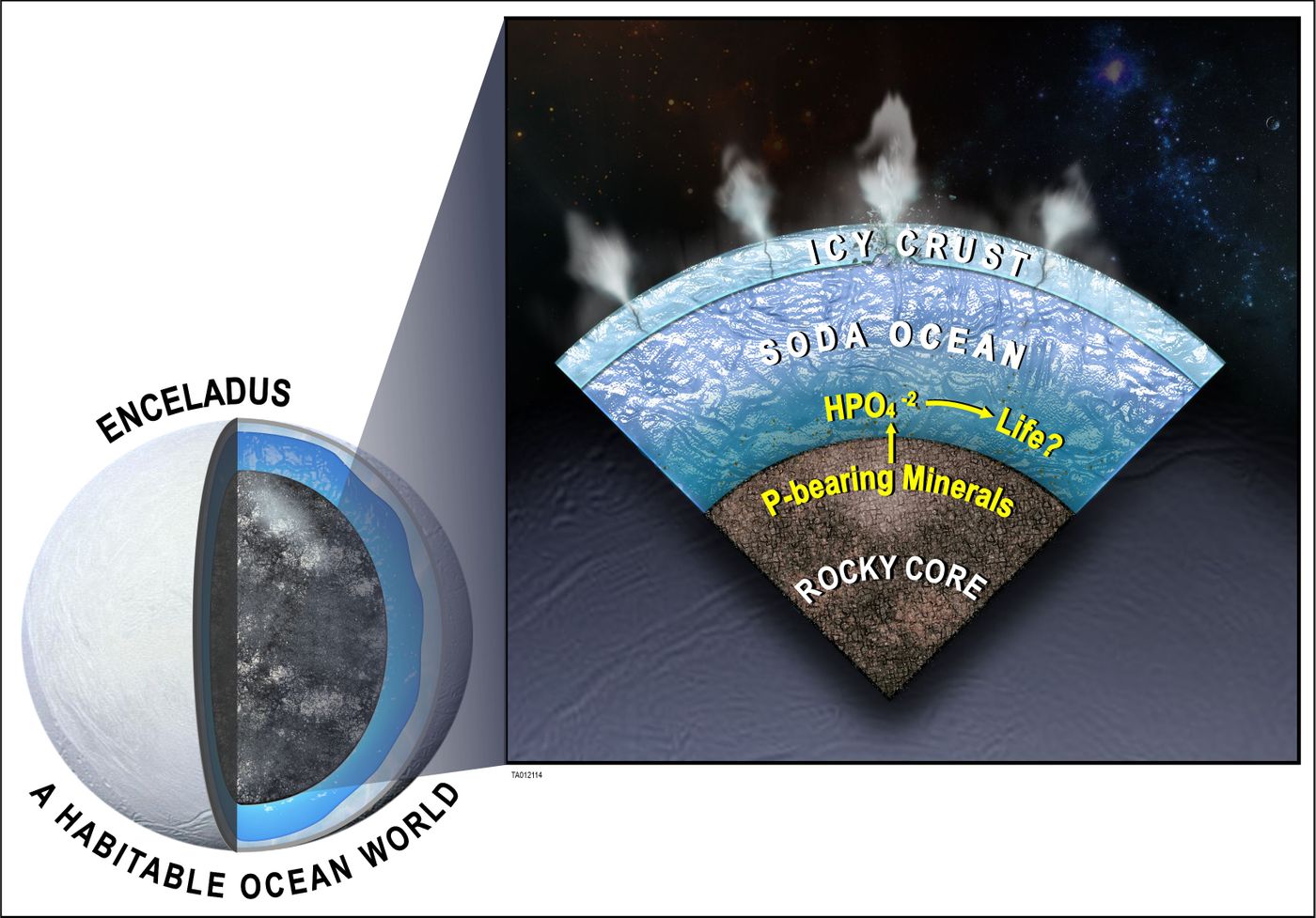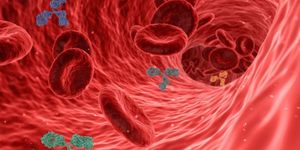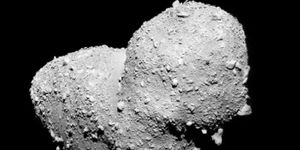Enceladus' Interior Ocean Confirmed to Possess Phosphorus, A Key Building Block of Life
Saturn’s moon, Enceladus, has long been known to possess an interior ocean of liquid water, but the question as to whether this ocean possesses the building blocks of life has eluded scientists. A recent study published in Nature firmly answers this longstanding question, as an international team of researchers have used data from NASA’s now-retired Cassini mission to detect phosphorus, which is a key building block for life, within the moon’s plumes in the form of phosphates, emanating from its south pole region.
While a 2022 study used model simulations based on Cassini data to suggest phosphorus could exist in the ocean of Enceladus, this is the first time scientists have used actual spacecraft data from ice grains to confirm these findings.
“In 2020 (published in 2022), we used geochemical modeling to predict that phosphorus should be abundant in Enceladus’ ocean,” said Dr. Christopher Glein, who is a scientist at the Southwest Research Institute (SwRI), and a co-author on the study. “Now, we have found abundant phosphorus in plume ice samples spraying out of the subsurface ocean.”
Data from NASA's Cassini spacecraft was used to verify phosphorus in the form of phosphates exists within the interior ocean of Saturn's moon, Enceladus. (Credit: Cassini Imaging Team/SSI/JPL/SWRI/Freie Universität Berlin)
Cutaway illustration depicting how phosphorus in the form of phosphates (e.g., HPO4-2) exist within the interior ocean of Enceladus. (Credit: Southwest Research Institute)
Even though the Cassini mission ended in 2017, scientists are still analyzing a trove of data that helped lead to this remarkable discovery. This particular data came from Cassini’s Cosmic Dust Analyzer, which detected sodium phosphates as the spacecraft flew through Enceladus’ plumes during the mission. After painstaking analysis, combined with analog experiments in the laboratory, the study’s results suggest that Enceladus’ ocean contains respectable amounts of phosphorus in the form of phosphates.
“We found phosphate concentrations at least 100 times higher in the moon’s plume-forming ocean waters than in Earth’s oceans,” said Dr. Glein. “Using a model to predict the presence of phosphate is one thing, but actually finding the evidence for phosphate is incredibly exciting. This is a stunning result for astrobiology and a major step forward in the search for life beyond Earth.”
The prospect of searching for life in oceans worlds of our solar system is at the forefront of scientific community discussion with worlds like Europa, Titan, and Pluto possessing bodies of liquid either on their surface (Titan) or at some depth beneath the surface (Europa and Pluto). Other potential ocean worlds include dwarf planet Ceres, Ganymede, Callisto, Mimas, and Triton.
What other building blocks of life will we discover within the interior ocean of Enceladus, and do other ocean worlds within our solar system also contain similar building blocks? Only time will tell, and this is why we science!
Sources: NASA, Nature, Astrobiology.com, Labroots, Southwest Research Institute, Labroots (1), NASA (1), NASA (2), NASA (3)
As always, keep doing science & keep looking up!










